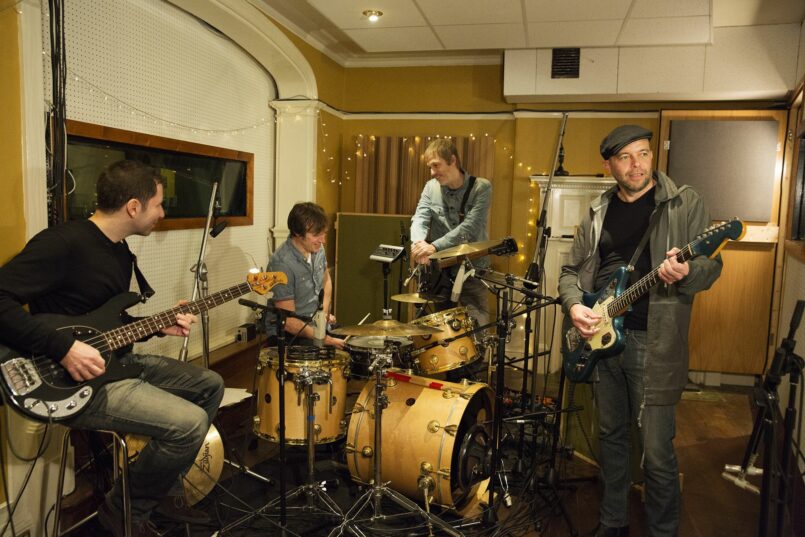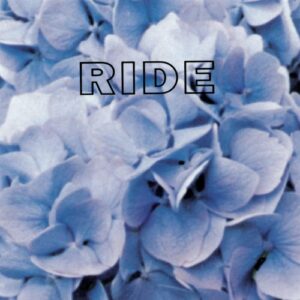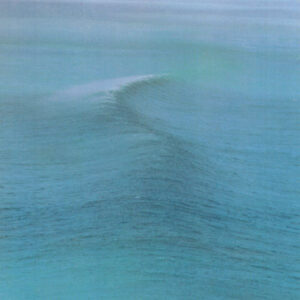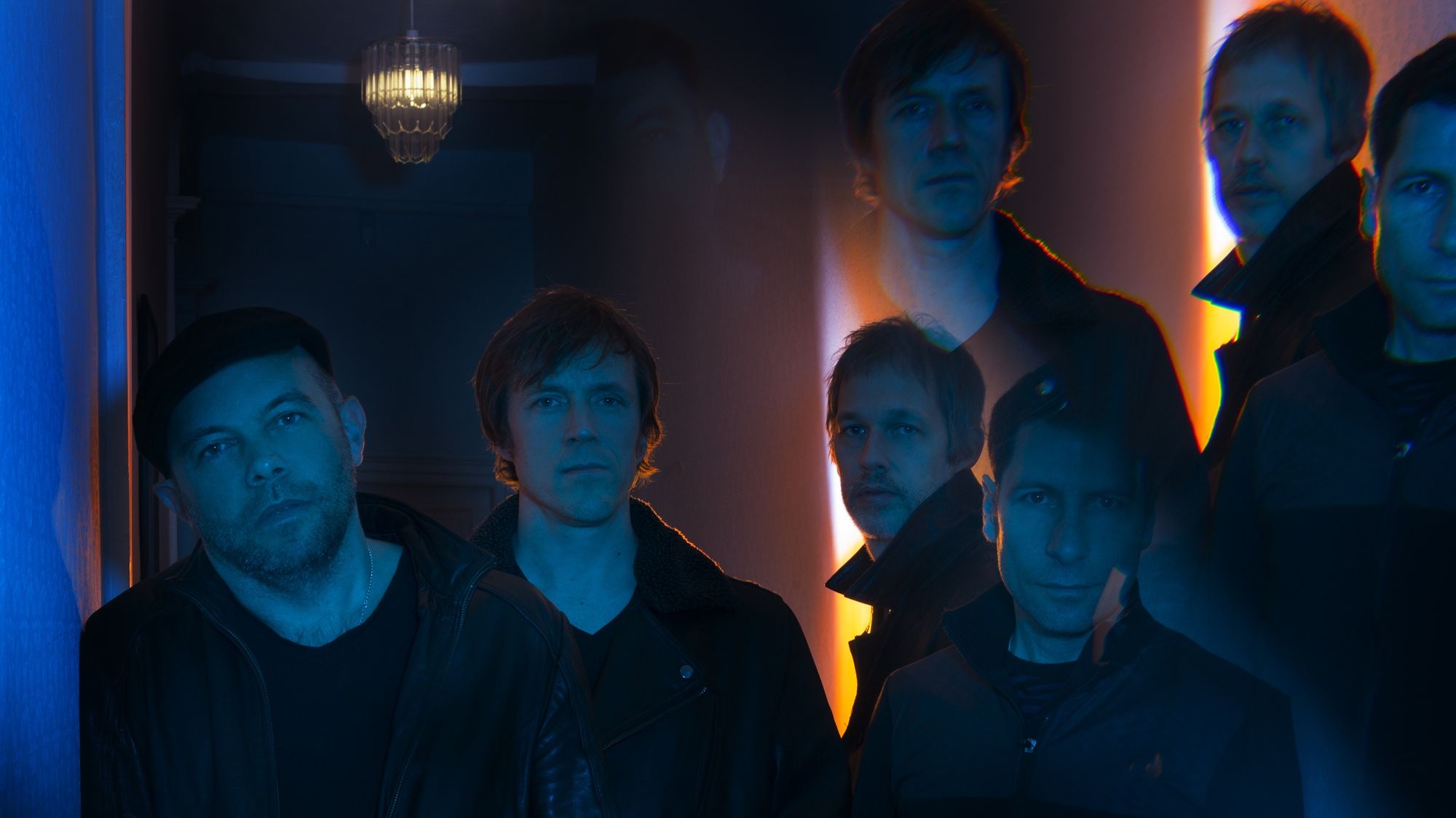The word “shoegaze” brings a cascade of neo-psychedelic descriptors to mind. Dreamy. Spaced-out. Euphoric. Layers upon layers of effects-laden guitars intertwined with fuzzed-up vocals to create walls of seemingly endless depth. Alongside contemporaries like My Bloody Valentine, Slowdive, and Lush, Oxford foursome Ride defined—and later defied—the UK shoegazing movement of the late ’80s through the mid ’90s.
Built around the yin and yang core of old school pals guitarist/vocalists Andy Bell and Mark Gardener, the band was filled out with bassist Stephen Queralt and drummer Laurence “Loz” Colbert. In their best moments, Ride turned out melody-rich, pop-smart tunes that managed to simultaneously soar while reveling in thick beds of artfully arranged feedback. After an A&R feeding frenzy, Ride was signed to Alan McGee’s Creation Records in 1989 and quickly released a trio of critically acclaimed EPs, two of which were later condensed into the Smile mini-album by their US label, Sire.
Ride’s debut LP, Nowhere, and its follow-up, Going Blank Again, are still rightly considered two of the greatest shoegaze records ever made. Unfortunately, when the band drastically changed directions in 1994 with the Americana-infused Carnival of Light, they found their audience unwilling to evolve with them. Two years later, they delivered what would be their final album, the underwhelming ’70s pastiche throwaway Tarantula, which was written and recorded over the course of the band’s dissolution. That was set to be the end of Ride. Andy Bell went on to enjoy success playing bass with Oasis, while Gardener pursued a solo career. In the intervening years, Ride’s profile never dimmed. Late in 2014, the quartet agreed to put aside their differences and reassemble for a worldwide tour.
FLOOD reached Gardener two nights before he and Bell were set to play Ride’s first concert in two decades: an acoustic show at London’s 100 Club benefiting the nonprofit War Child. It was an appropriate way to bring Ride back to life. “A lot of the songs started stripped-down with voice and an acoustic guitar,” says Gardener. “That’s before the noise and the effects joined in.”
Neither artist had played many of the songs in twenty years. “Tongue Tied,” which was recorded for Going Blank Again but left off the album, had never received a single live airing. “I had to relearn a lot of them completely,” says Bell.
With the comeback gig now under their belts, the full band convened to practice for their rabidly anticipated Stateside return at Coachella. To coincide with the reunion, Rhino Records is re-releasing OX4: The Best Of Ride, which spans their six-year recorded career. Before the madness kicks off all over again, Gardener and Bell speak here about the albums that made Ride famous and those that precipitated their demise.

Smile (1990)
 Andy Bell: In our first rehearsal, we wrote “Drive Blind” while we were having a half-hearted attempt at trying to figure out The Smiths’ “How Soon Is Now?” We hit on this combination of Mark’s lead and my rhythm guitar. The song has probably got a bit of The Cure in it, too. It was a melting pot, because we put in the My Bloody Valentine noise section to fit the lyrics. At that point, My Bloody Valentine was our primary influence, along with Spacemen 3, Loop, and Dinosaur Jr.
Andy Bell: In our first rehearsal, we wrote “Drive Blind” while we were having a half-hearted attempt at trying to figure out The Smiths’ “How Soon Is Now?” We hit on this combination of Mark’s lead and my rhythm guitar. The song has probably got a bit of The Cure in it, too. It was a melting pot, because we put in the My Bloody Valentine noise section to fit the lyrics. At that point, My Bloody Valentine was our primary influence, along with Spacemen 3, Loop, and Dinosaur Jr.
Mark Gardener: After that session, we thought to ourselves, “This feels really, really good.” However, you don’t understand that feeling could affect other people. Our manager sent out one demo tape. Meanwhile, I was trying to finish an art exam at school. I came home at lunchtime and the phone rang. It was a guy from Warner Bros. Records saying, “We’ve heard your tape and we want to meet you.” I was blown away. After that call, I totally screwed up my art exam. A few months later, we had Alan McGee stalking us, and the rest is history.
Nowhere (1990)
 Gardener: Our feeling was, “Let’s work all hours, enjoy ourselves, and see what we can do.” Listening back, I hear four guys—wide-eyed and pretty naïve—going through the night until we got tape we were happy with. It turned into a night album, because we became nocturnal. The title Nowhere was an anti-statement. There was something about the way the music started to sound and how we felt, because we got lost in our sonic bubble.
Gardener: Our feeling was, “Let’s work all hours, enjoy ourselves, and see what we can do.” Listening back, I hear four guys—wide-eyed and pretty naïve—going through the night until we got tape we were happy with. It turned into a night album, because we became nocturnal. The title Nowhere was an anti-statement. There was something about the way the music started to sound and how we felt, because we got lost in our sonic bubble.
Bell: “Vapour Trail” is the song on here that everyone name-checks all the time. When we played it at the War Child gig, you could feel the atmosphere in the room change. Lyrically, it’s quite raw. You read the words back and it’s really sincere. I probably wouldn’t write them like that now. I’d probably make them more obscure-sounding, because I’d be embarrassed. But it’s good to say the embarrassing things, because they translate pretty well.
Going Blank Again (1992)
 Gardener: At that time, we discovered the film Withnail & I. We were smokers, we liked to get stoned, so it really struck a chord with us. That’s where we got the song title “Cool Your Boots” and the sample that starts it off, “Even a stopped clock gives the right time twice a day.” The song “Leave Them All Behind” was a bit of a dig at all the bands with short names writing noisy songs that were trying to steal our thunder then. We thought we’d leave them all behind. The English press is great at coming up with names and lumping bands together. We were doing world tours and when we came home we were told that we were a shoegazer band. It’s funny, because the term “shoegazing” was a putdown at first, but it became a genre that people were proud of. I got what the press was getting at, because I didn’t want to be Bono or Freddie Mercury. I wanted people in the room to feel like it could be them up on stage. I didn’t make music to feed my ego and prance around like an idiot. However, the notion that we just stood there looking at our shoes, not committing to what we were doing, was ridiculous. We rocked. We were full-on.
Gardener: At that time, we discovered the film Withnail & I. We were smokers, we liked to get stoned, so it really struck a chord with us. That’s where we got the song title “Cool Your Boots” and the sample that starts it off, “Even a stopped clock gives the right time twice a day.” The song “Leave Them All Behind” was a bit of a dig at all the bands with short names writing noisy songs that were trying to steal our thunder then. We thought we’d leave them all behind. The English press is great at coming up with names and lumping bands together. We were doing world tours and when we came home we were told that we were a shoegazer band. It’s funny, because the term “shoegazing” was a putdown at first, but it became a genre that people were proud of. I got what the press was getting at, because I didn’t want to be Bono or Freddie Mercury. I wanted people in the room to feel like it could be them up on stage. I didn’t make music to feed my ego and prance around like an idiot. However, the notion that we just stood there looking at our shoes, not committing to what we were doing, was ridiculous. We rocked. We were full-on.
Bell: That was Ride operating on full strength. It was the only record we wrote together and it was the best one we did. That’s the method where it all kicked in and everyone in the band was being used for his strengths.
Carnival of Light (1994)
 Bell: We realized that we had to have a break after the first two albums. So we took a couple months off, then came back and started to write. Meanwhile, Oasis was just starting to appear on the scene. We were really taken with The Jayhawks’ Hollywood Town Hall, country rock, The Byrds, and Gram Parsons—a more expansive, bigger, more retro sound. Coming back with our finished album, Oasis had been signed and done a few gigs. They sounded like The Jesus and Mary Chain playing Beatles tunes. It was so punk rock. At that point I thought, “Carnival of Light is really barking up the wrong tree,” and it wasn’t even out yet. I think the world agreed as well. We did tour the album, but we didn’t get to the States with it. That was sad, because it was made with an American-influenced sound.
Bell: We realized that we had to have a break after the first two albums. So we took a couple months off, then came back and started to write. Meanwhile, Oasis was just starting to appear on the scene. We were really taken with The Jayhawks’ Hollywood Town Hall, country rock, The Byrds, and Gram Parsons—a more expansive, bigger, more retro sound. Coming back with our finished album, Oasis had been signed and done a few gigs. They sounded like The Jesus and Mary Chain playing Beatles tunes. It was so punk rock. At that point I thought, “Carnival of Light is really barking up the wrong tree,” and it wasn’t even out yet. I think the world agreed as well. We did tour the album, but we didn’t get to the States with it. That was sad, because it was made with an American-influenced sound.
Gardener: I didn’t want to fit in at all with Britpop. I was a fan of the first and second Oasis albums, Radiohead, and Supergrass, but I thought most of the bands were pretty awful. When people start waving the Union Jack around, I start wondering, “What’s going on here? Are you going to conquer America like The Beatles and Stones? But you’re not very good. How’re you going to do that?” It was a little more style over substance to me.
Tarantula (1996)
 Bell: Three months after Carnival of Light came out, we finished our tour for it. I thought we should just go and bash something out in the studio—it’ll be great. We’ll keep it rough-and-ready. That was the Oasis influence creeping in, because I wanted more punk in what we were doing. But the songs weren’t good enough and the vibe wasn’t really there. Sometimes you just don’t get it right. I was pushing forward and trying to keep it together, while Mark was drifting off. He left while we were mixing it. The rest of us just figured we’d finish it, but the desperation creeps into the album’s sound.
Bell: Three months after Carnival of Light came out, we finished our tour for it. I thought we should just go and bash something out in the studio—it’ll be great. We’ll keep it rough-and-ready. That was the Oasis influence creeping in, because I wanted more punk in what we were doing. But the songs weren’t good enough and the vibe wasn’t really there. Sometimes you just don’t get it right. I was pushing forward and trying to keep it together, while Mark was drifting off. He left while we were mixing it. The rest of us just figured we’d finish it, but the desperation creeps into the album’s sound.
Gardener: I’m not saying we’re like The Stones or Zeppelin or The Beatles or The Who, but when you think about those bands, they all had that thing going on with the singer and guitar player. I don’t know what it is. Some friction is good, because we upped each other’s game. When that works together, it’s incredible. The last record is basically the sound of us not playing to our strengths, not pulling together well, and not being in a good environment. People can hear when the chemistry changes. Music’s transparent, so you can’t cover that stuff up.
2015 and Beyond
Bell: I’m not ruling out new material. I’m just focusing on nailing these gigs. This tour is about good memories, nostalgia, giving people what they want, and celebrating what we did. And making sure we’ve still got it. After that, if everything works, why not give it a shot?







